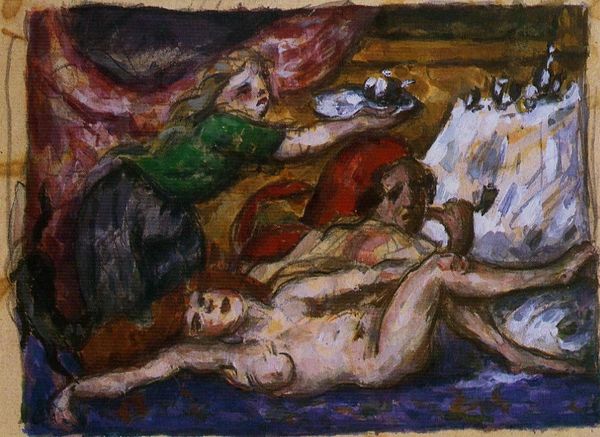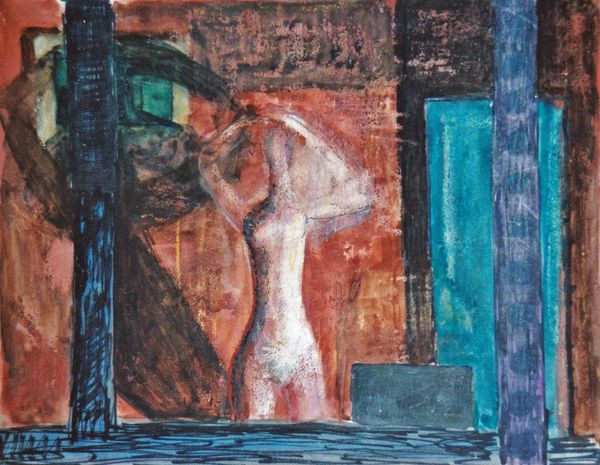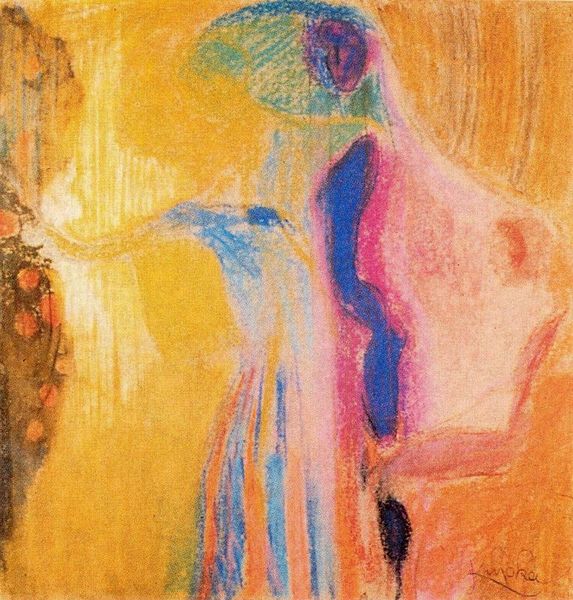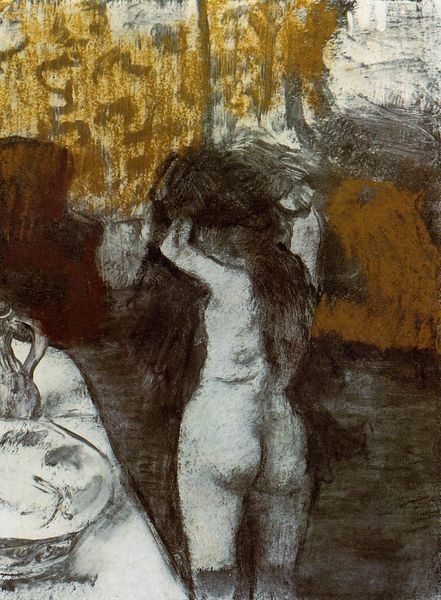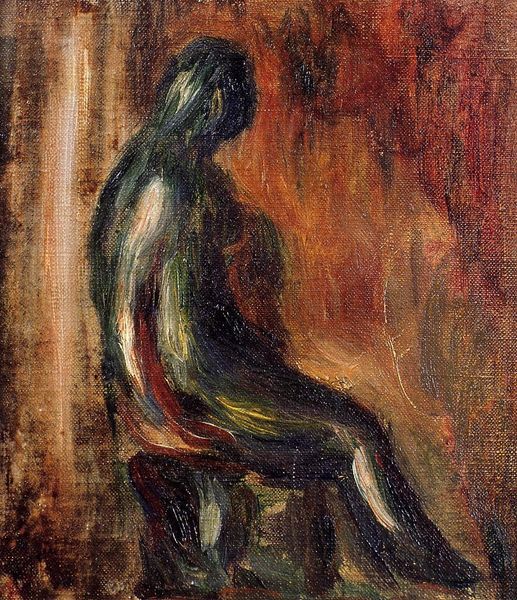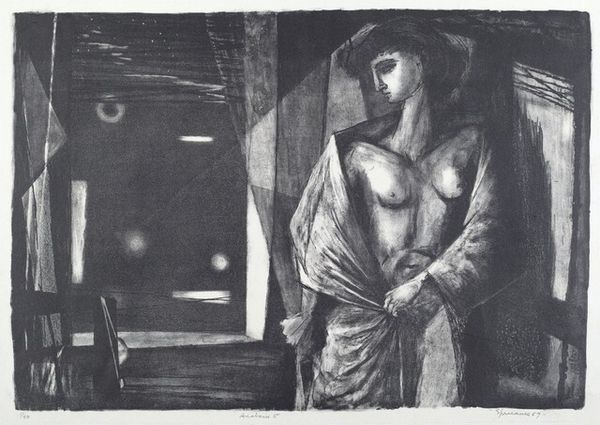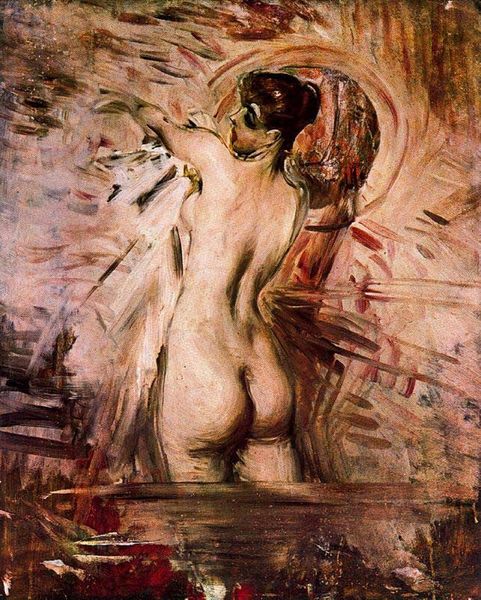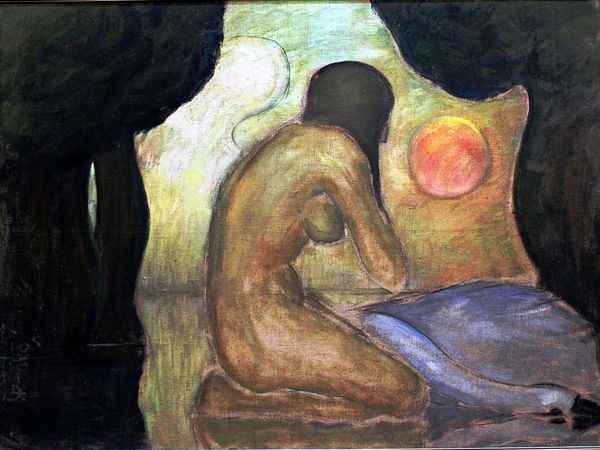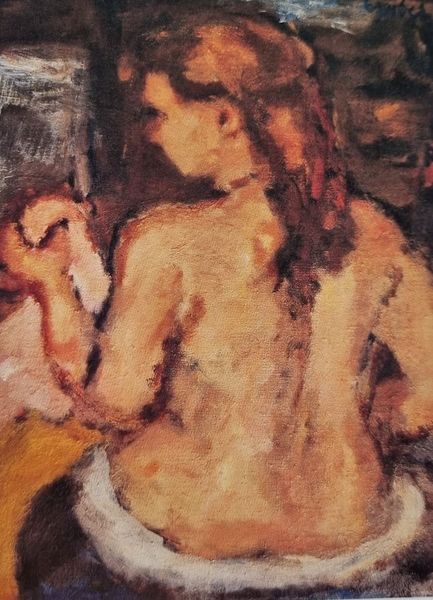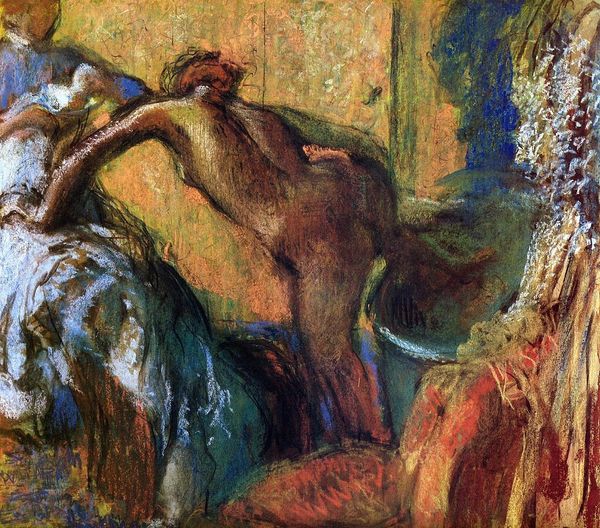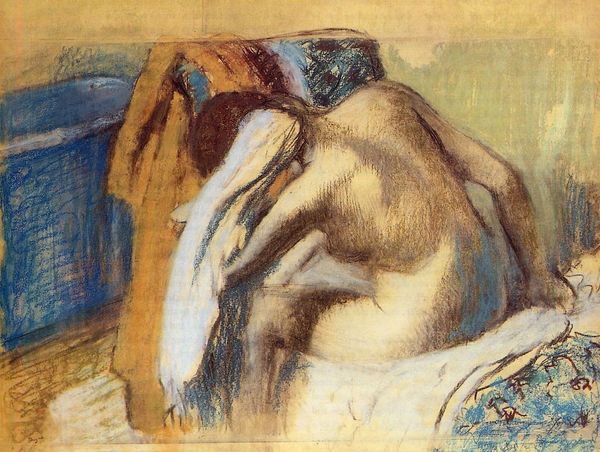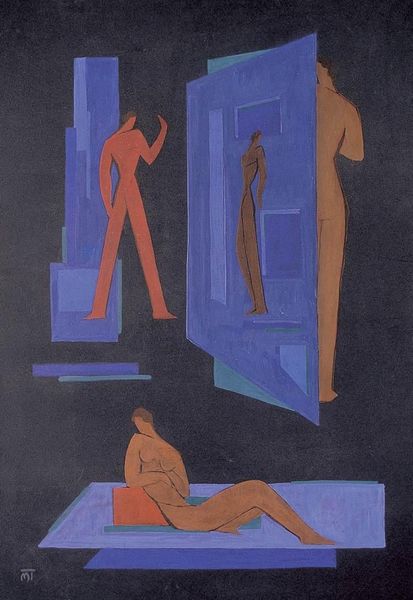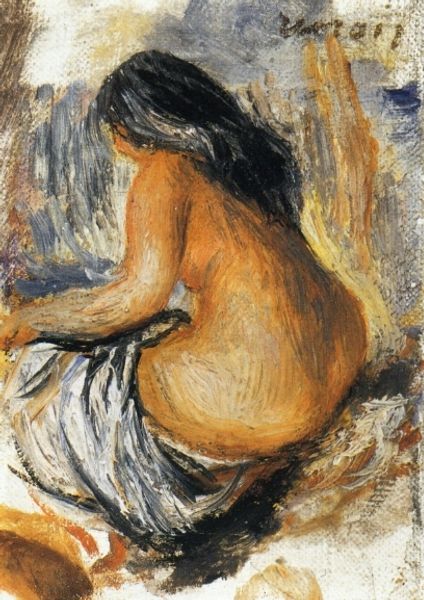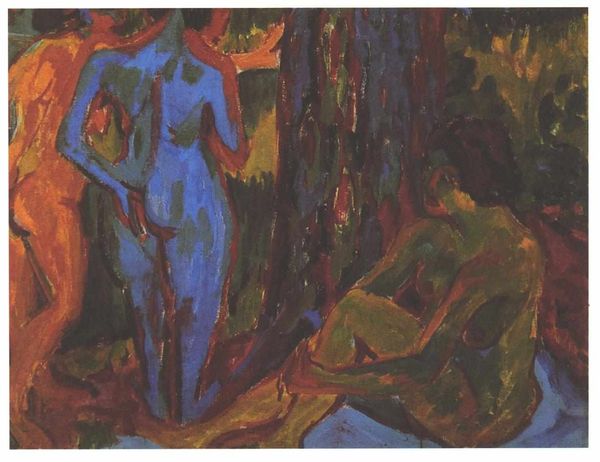
Copyright: Public domain
Editor: So, this is Istvan Farkas's "Standing in the Sun," painted in 1943. It's oil on canvas. I find the mood kind of dreamlike, maybe a bit melancholic. It's hard to put my finger on why. What do you see in this piece? Curator: Well, the social context is critical here. Farkas painted this during the Holocaust. Knowing that, does the “dreamlike” quality shift? Think about the role of art during periods of intense political and social upheaval. Editor: Definitely. It's hard to ignore that context. So, that red sun – is it about hope, or is it ominous, maybe symbolizing the dangers surrounding him? Curator: It could be both, couldn't it? That's the power of symbolism within a specific historical framework. And consider who was able to create art at that time, and what was deemed appropriate. Who got to express their perspectives and what pressures were they facing? Editor: It feels very personal. Like an intimate moment frozen in time but also fraught with something unspoken. The nude figure facing the light… is that an embrace or an exposure? Curator: Precisely. The politics of imagery come into play. How do public and private intersect in the act of viewing this work? Where would a piece like this have been displayed, and who would have been excluded from seeing it? Editor: So the painting's location, whether in a private home or a gallery, changes our understanding of its message and artistic merit, who could engage with it. I hadn't really considered it in those terms before. Curator: Exactly. And even the museum today contributes to the ongoing story of this work. What have we chosen to display it, and what narratives are we creating in doing so? Editor: That’s a great point. I am grateful to consider those implications, how museums themselves frame our experience of art. Thank you! Curator: You’re welcome. Considering these elements adds greater depth to our viewing, and informs us about the artist, the art, and our place in relation to both.
Comments
No comments
Be the first to comment and join the conversation on the ultimate creative platform.
